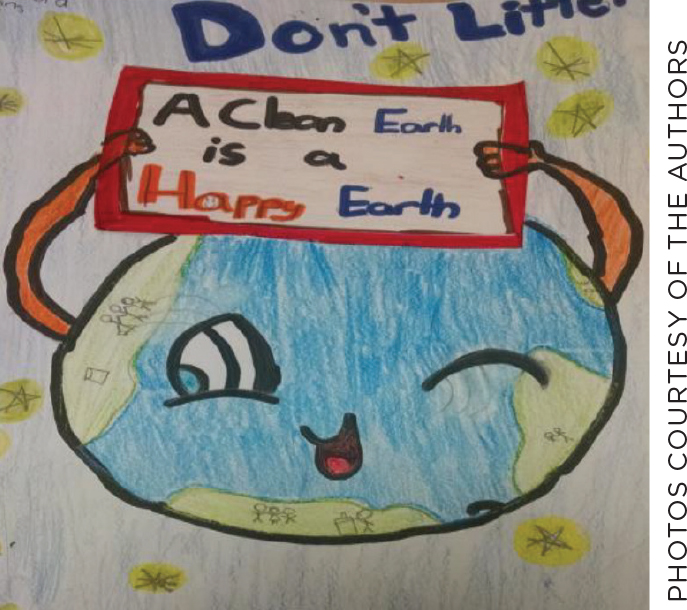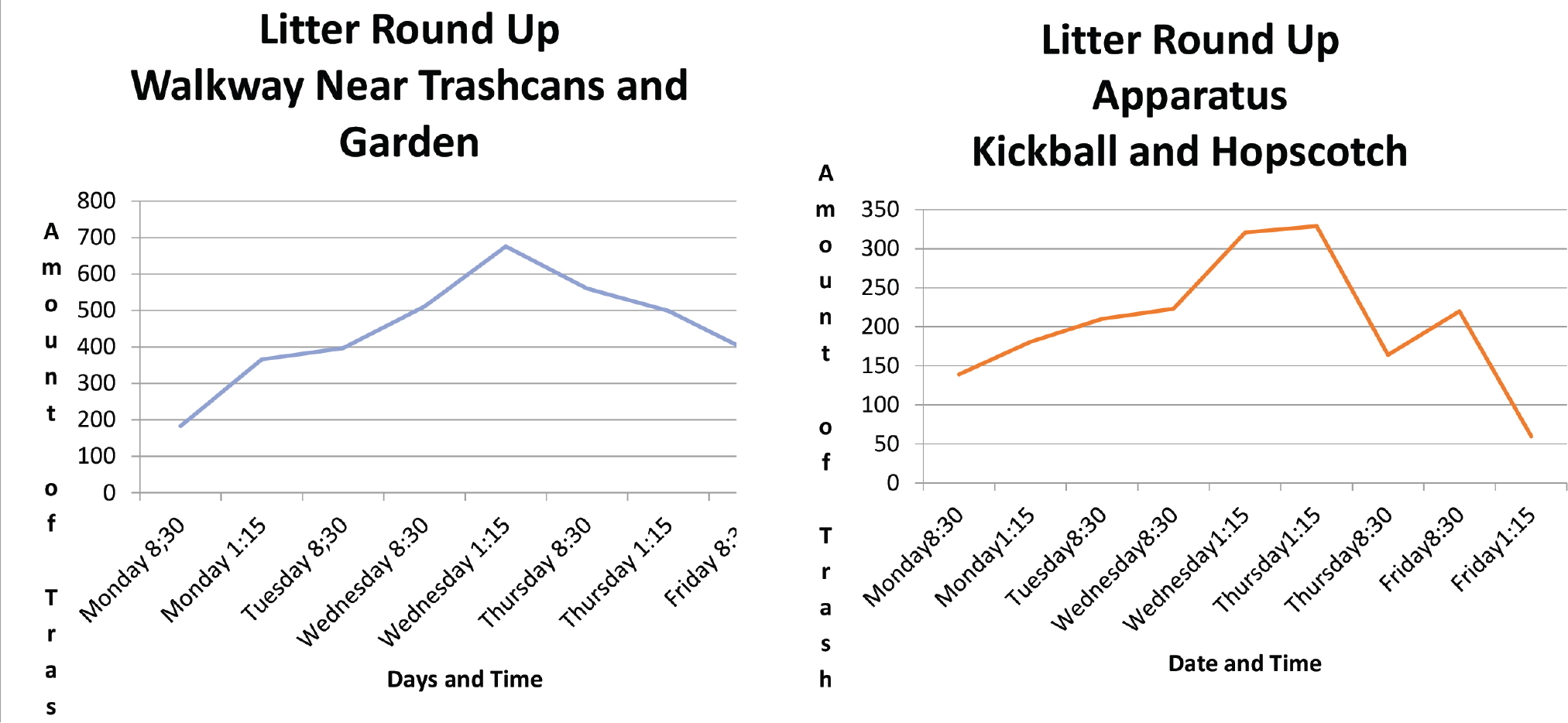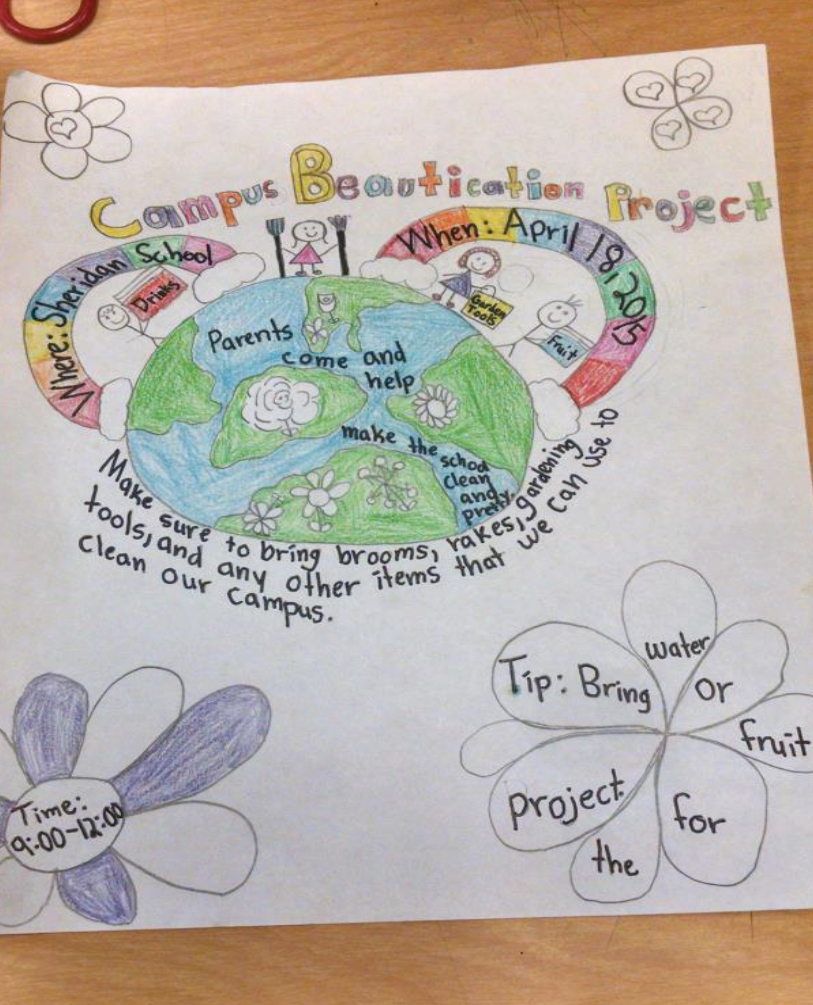Teaching Teachers
Student-driven Stewardship Projects
Using environmental education to promote the use of science practices
Science and Children—September/October 2020 (Volume 58, Issue 1)
By Deborah Tucker, Bill Andrews, and Kathryn Hayes
The science and engineering practices specified in A Framework for K–12 Science Education (NRC 2012) help students develop an understanding of how scientists do their work. Because these practices are often underemphasized in K–12 science education, our Environmental Education Professional Development Institute (EEPDI) emphasized pathways to integrating next generation practices with environmental stewardship for informed, responsible action on behalf of the environment and future generations. We describe our innovative approach to curriculum integration in this article, with guidelines for implementation in your classroom. We first overview the EEPDI and follow up with one example of an upper elementary stewardship project in which three teachers integrated the Next Generation Science Standards (NGSS), Common Core State Standards (CCSS), and environmental education. We also provide overall results of how teachers reflected on their instructional practice.
The EEPDI Focus
The Institute emphasized integration of NGSS practices through student-centered stewardship projects, which offer an excellent means to get students involved in science, increase their critical thinking, and motivate action on environmental issues that are meaningful to the students. One goal was to engage students in “real” local environmental issues by getting them outdoors working in collaborative groups.

Student poster
Projects ranged from water conservation and water quality testing to energy audits, school gardens, and campus beautification; projects depended on student interest. A list of previous stewardship projects can be viewed on the California Environmental Education Foundation (CEEF) website (see Internet Resources). Most projects included a communication or outreach component, for example, a local campaign to “pick up your trash,” a parent “Eco” night, or a digital storybook.
During the EEPDI, direct instruction was given to teachers on how to facilitate a student-driven stewardship project, the majority of which was described in a written handout (see NSTA Connection). Experts in conducting stewardship projects shared examples with the teachers and urged the teachers to help their students identify and focus on just one environmental issue in their local area (school or community). Then teachers guided students to investigate ways to address an issue and develop and implement an action plan to improve the environment. The stewardship project, which often has multiple service-learning components, had to focus on caring for the environment or researching and solving an environmental issue in the local context. EEPDI emphasized that teachers, “be aware of your role as the teacher-facilitator and the students’ roles as the planners, designers, implementers, and evaluators of the project.” Teachers provided support and facilitation to promote student ownership and comprehension by:
- Leading students in brainstorming about environmental issues,
- Guiding students to select a project topic,
- Assisting students to gather information about the selected topic,
- Facilitating the planning of the project,
- Helping with implementation of the project, and
- Leading students in reflecting on the project.
Exemplary Project
One compelling example of a student-driven environmental stewardship project— successfully facilitated by three teachers who taught at the same urban elementary school—vividly illustrates integrated standards-based instruction from both the NGSS and CCSS-ELA. The three upper-elementary teachers (one in each of grades 4, 5, and 6) were reinforcing aspects of the Kindergarten NGSS performance expectation (PE) K-ESS3-3 (Communicate solutions that will reduce the impact of humans on the land, water, air, and/or other living things in the local environment) and teaching to aspects of the Grade 5 PE 5-ESS3-1 (Obtain and combine information about ways individual communities use science ideas to protect the Earth’s resources and environment). These teachers chose to collaborate on this project. As one teacher stated, “Some benefits included being able to complete a rather large project with two other people (reduces the workload for each person), students can collaborate across grade level and age level, and the exchange of ideas was exciting for students and teachers.”
Because the science and engineering practices grow in complexity across the grades throughout elementary school, students continually build on and revise their knowledge. In the context of this stewardship project, the teachers capitalized on the opportunity to reinforce the Kindergarten NGSS performance expectation K-ESSC-3 (Table 1).
| Focus standards for the stewardship project. | ||||||||
|---|---|---|---|---|---|---|---|---|
|
The students from the three classes decided, through a brainstorming session, that they wanted to solve the litter problem that plagued their campus. The teachers helped them shape their ideas into an educational problem-solving practice that built an extraordinary learning experience where science was integrated with stewardship. Teachers shared classroom management and informally allocated attention and supervision as needed. To assess the campus trash problem, the students were assigned to a cross-grade research team of about six. (Students in each of the three classrooms were numbered off and they were placed in groups based on their numbers. Each team had at least one fourth-, fifth-, and sixth-grade student in it.) Each team went out three times a day (two times on Tuesday, with early dismissal) and inspected the same predetermined area of the school for trash accumulation. After safely picking up and tallying their trash counts, teams graphed their results on large posters to share with their fellow students and interested community members (Figure 1). The teacher guided the activities using science practices (asking questions, collecting data, communicating) as well as listening, speaking, reading and writing regarding this “real world” issue.

Graphs of student-generated data on campus litter collection.
In addition to tallying the pieces of trash at specific locations around the school, students gathered information by reading articles and researching information on litter and recycling. Several articles were accessed from the National Geographic website (see Internet Resources). The teacher read and discussed the article in class using some close reading techniques to encourage students to focus on details to develop a full understanding; e.g., writing “the gist” for each paragraph. Students completed individual informative writing assignments on litter and how it would affect the environment. Sample writing prompts included: explain the causes and effects of littering in your community. Teams constructed posters and videos on littering in small groups.
Finally, the teachers connected the project to the NGSS and CCSS by teaching about the impacts of litter on local (e.g., school ground trash) and global ecosystems (e.g., plastics in the ocean) and guiding the students in scientific communication projects. The teachers used the analyzed data students had collected from their campus litter observations (see Figure 1); the students concluded that certain days and times of the day were worse than others in terms of school litter. Wednesday afternoon yielded more litter items than Monday morning.
The students wrote persuasive letters to their student council that advocated for a school beautification day, made posters (Figure 2) to educate the entire campus about the litter problem, conducted an anti-litter campaign, and recruited campus and community participants to help with the beautification project. A community member with professional landscape experience helped select and deliver the drought-resistant plants to the school, show the students where and how to plant them on campus, and demonstrate safe practices in the garden. The garden tools were brought from home or loaned by the landscaper. Impressively, the students were successful in getting the campus clean-up materials donated by a local nursery for their anti-litter patrols, and the teachers were successful in writing a proposal and receiving a grant to purchase drought-tolerant plants, mulch, and top soil. On the beautification day, more than 60 current and former students, their parents, and teachers worked together to transform the campus. Following the beautification day, the three classes of students continued to volunteer to maintain the clean campus and tend the new plants. The students collaborated with a community businessman who helped them reach out to local merchants (e.g., nurseries) for donations of plants and soil amendments.

Student posters for school Beautification Day.
This one project demonstrates how teachers used stewardship to incorporate the NGSS practices in an authentic, student-centered way. The time invested included classroom sessions (8 days of picking up and counting/sorting trash three times a day and graphing data (10–15 minute sessions; total ~6 hours) and reading articles (~2 hours). Outside of class-time included the Saturday beautification event (~3 hours) and students’ tending to their plants in the following weeks during recess (~12 hours).
Effects on Instructional Practice
Teacher practice evolved as the teachers saw their students engage with the stewardship project. The students selected the issue to study, igniting student ownership and motivation as they conducted research, formulated an action plan, and executed the project. Teachers also gained practical skills in implementing the science practices, became familiar with several more environmental resources, and increased their confidence.
Analysis of pre- and post-survey data revealed that statistically significant instructional shifts occurred with teachers’ integration of stewardship, their use of reasoning, constructing explanations, and argument; investigation design, and data collection and analysis. Teachers were able to incorporate grade-appropriate science practices into their instruction and successfully align them with several of the CCSS. Three key findings emerged in our research: (1) Environmental stewardship is an effective vehicle for science practices, with the inclusion of science practices “legitimizing” environmental education in schools; (2) Students were engaged in and excited about learning and exhibited positive perspectives; and, (3) Teachers reported that the integration of NGSS science practices worked well within the stewardship projects.
Teachers were able to assist their students with their project research, showing them how to “do” science…and increase student engagement with the practices of science. These elementary teachers realized that facilitating the project required a different kind of instruction.
“I think again having the opportunity to assist my students with the research, as opposed to before where we just gave them one piece of information and they had to read it, break it down, and then go through their reasoning and thinking, but this time we took a different route. The students have to ask questions, [conduct] research to support their questions, and I had never done that before. … Now, we’re getting a whole group of people involved and we’re having conversations. Then they’re taking those conversations home. And we’re reading articles that are all related to the theme or topic of what we’re talking about.”
Our teachers realized that their role as facilitator or co-researcher required a new way of instruction. They no longer were only providers of information; they were guiding the learning process in new and different ways.
Discussion
You too, like the teachers involved in the Environmental Education Professional Development Institute, can incorporate the NGSS Science Practices into your student-driven stewardship projects. These activities can be adapted to other grade levels and student abilities. Our teachers found it helpful to also seek cross-disciplinary (e.g., math teachers) collaboration at their school, as well as recruit community expertise outside of their schools. Science and engineering practices were integrated as students asked questions, planned and carried out their investigation, analyzed and interpreted data, and communicated information. Since repeated exposure is required over many years to deeply understand the disciplinary core ideas (DCIs) and crosscutting concepts (CCCs) and to build students’ proficiency with the practices, we propose that repeated, varied stewardship projects provide an excellent opportunity for three-dimensional learning.
In using the project guidelines and reviewing previous stewardship projects (see Internet Resources) you may find resources to engage students in stewardship in the context of NGSS, invoking high levels of student engagement and motivation. You might be able to acquire similar expertise for your own project, e.g., from a local nursery, from a local gardening club, or local college, as well as local sources to assist; e.g., local PTA or service clubs. Results indicate that the projects facilitated student engagement in explanation, argumentation, and classroom data collection and analysis. By engaging their students in a multi-class stewardship project, teachers discovered that their instructional practices had been positively impacted—and you can achieve the same results in your classroom! The grade 4 teacher reported, “I think that bringing it to life and making them realize how exactly they fit into this whole [campus/community litter] problem, it’s taking it to a different level.
Internet Resources
California Environmental Education Foundation
http://caeefoundation.org/doc.html
National Geographic
http://news.nationalgeographic.com/news/2014/07/140715-ocean-plastic-debris-trash-pacific-garbage-patch
NSTA Connection
Download the NGSS connections for this project, plus project steps and rubric, at www.nsta.org/science-and-children.
Deborah Tucker (deborahlt@aol.com) is an Independent Science Education Consultant in Napa, California. Bill Andrews is an Ex-Officio Advisor and Founder of the California Environmental Education Foundation in Davis, California. Kathryn Hayes is an assistant professor at California State University, East Bay, in Hayward, California.
Citizen Science Pedagogy Preservice Science Education Teacher Preparation Elementary


